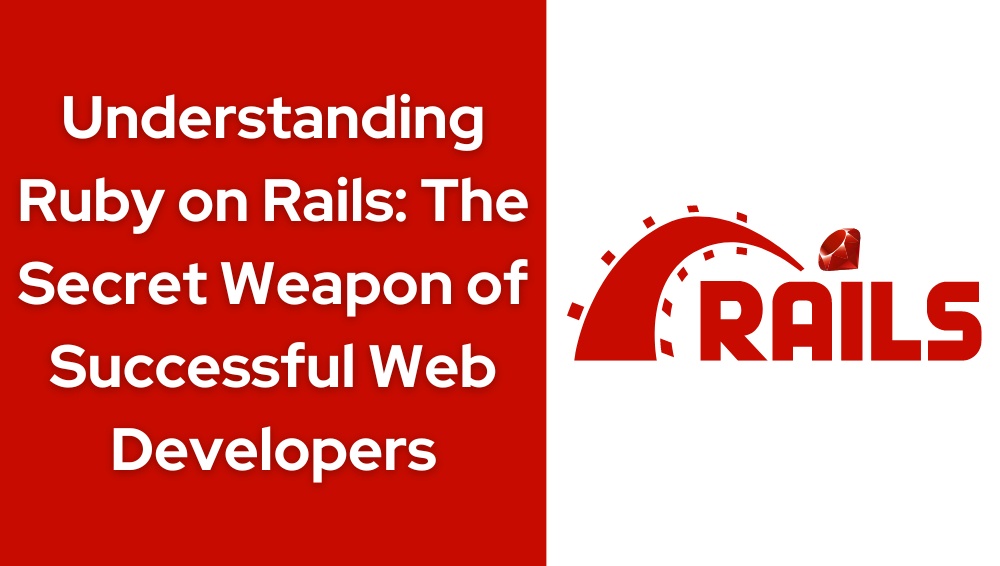Why Choose Ruby on Rails?
Expedited Web Application Development
A leading benefit of Ruby on Rails lies in its promotion of Rapid Application Development (RAD). Rails embrace the mantra of "Convention over Configuration," prioritizing intuitive defaults and prescribed conventions. This lets developers turn their attention to penning code specific to their application's unique business logic, bypassing redundant setup and configuration chores. As a result, using Ruby on Rails, developers can craft applications bursting with features more swiftly than with alternative frameworks.
Efficiency Through Convention over Configuration
Ruby on Rails wholeheartedly adopts the ethos of convention over configuration. Embracing a standardized set of conventions, Rails bypasses the necessity for extensive configuration files. Developers can adhere to well-established naming norms for models, controllers, and database tables, which significantly simplifies code comprehension and navigation. This convention-centric strategy not only boosts code readability but also fosters synergy among developers collaborating on the same endeavor.
The Elegance of Ruby Language
Ruby, the foundational language of Ruby on Rails, is celebrated for its elegance and expressivity. It possesses a pure syntax that mirrors natural language, making it a breeze for developers to compose and comprehend code. This effortless simplicity boosts the overall efficiency of Ruby developers using Rails, allowing them to concentrate on tackling intricate business issues instead of wrestling with twisted syntax.
A Vibrant Developer Community
One cannot overlook the thriving, supportive community surrounding Ruby on Rails. This community offers in-depth documentation, tutorials, and libraries, facilitating the learning process and the application of the framework's features. Active participation ensures that Rails remains aligned with the most current web development trends and best practices. Developers can seek help, exchange insights, and cooperate with fellow Rails enthusiasts, cultivating a fertile ecosystem for growth and innovation.
Inside the Ruby on Rails Framework
MVC Architecture
Ruby on Rails adheres to the Model-View-Controller (MVC) architectural paradigm, segregating application logic into three interlinked components. The model encapsulates data and business logic, the view orchestrates data presentation, and the controller regulates the dialogue between the model and the view. This separation cultivates code modularity, reusability, and maintainability. Developers can work on different application facets independently, bolstering efficient teamwork and simplified code upkeep.
The Power of Active Record
Active Record, Ruby on Rails' Object-Relational Mapping (ORM) framework, offers an instinctive and seamless mode of interaction with databases by correlating database tables to Ruby objects. Active Record lets developers execute database operations via Ruby methods and associations, nullifying the need for manually coding complex SQL queries. The sophistication and elegance of Active Record render database interactions simpler and less prone to errors.
Understanding Action Pack
Action Pack, tasked with managing requests and generating responses in Ruby on Rails, is composed of two sub-components: Action Controller and Action View. Action Controller caters to incoming requests, processing them as per defined routes, and activating the corresponding controller actions. Action View oversees the rendering of views, which comprise the HTML templates that present the application's user interface. The seamless amalgamation of Action Controller and Action View empowers developers to efficiently create dynamic and interactive web applications.
Leveraging Action Mailer
Action Mailer, the Ruby on Rails framework for email management, delivers a simplified and convenient method to design, send, and manage emails from within a Rails application. Developers can formulate mailer classes encapsulating email templates and logic, facilitating effortless customization and reuse. Action Mailer also accommodates standard email features like attachments, inline images, and mail delivery methods. With Action Mailer, Ruby on Rails applications can seamlessly integrate email communication, thereby enhancing user engagement and interaction.
Conclusion
In conclusion, understanding Ruby on Rails is a valuable asset for web developers seeking to build successful applications efficiently. With its emphasis on rapid development, convention-driven approach, simplicity, and strong developer community, Ruby on Rails empowers developers to focus on delivering high-quality solutions. By harnessing the power of Ruby on Rails, web developers can unlock their potential and create web applications that stand out in the competitive digital landscape.


No comments yet